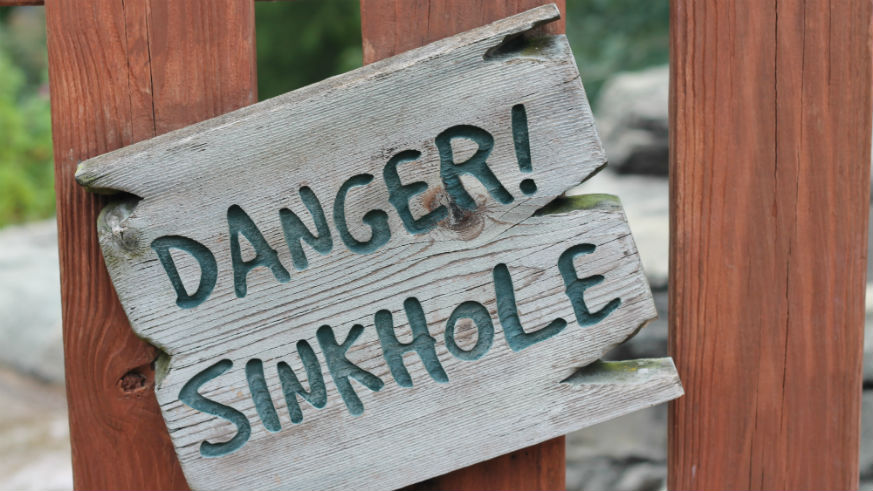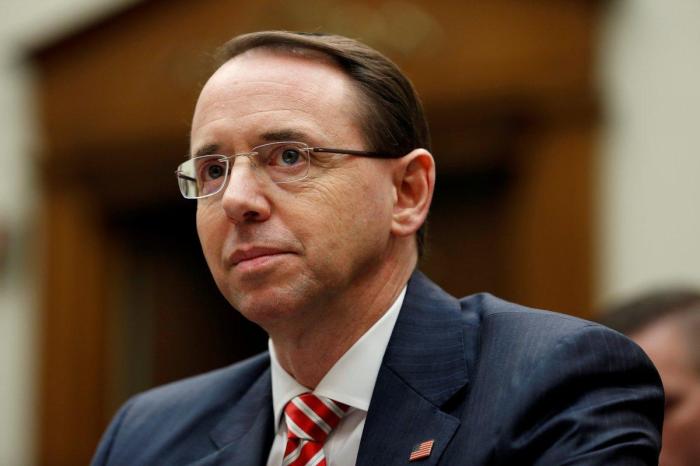As we’ve learned in the past, the White House, like any house, is subject to maintenance problems (mice, ants, roaches, the works). News spread this week that a sinkhole was discovered on the North Lawn. Is this an omen of some sort, or a normal occurrence? And exactly what is a sinkhole, anyway?
A spokeswoman from the National Park Service told ABC that the sinkhole, described as “small,” was found on the White House lawn this past Sunday.
She went on to say that sinkholes like this are common in Washington as a result of heavy rain, adding, “We do not believe it poses any risk to the White House or is representative of a larger problem.”
Here are some photos reporters tweeted out.
Exhibit A:
This week I’ve been observing a sinkhole on the @WhiteHouse North Lawn, just outside the press briefing room, growing larger by the day. pic.twitter.com/BsFUtxFqpB
— Steve Herman (@W7VOA) May 22, 2018
Exhibit B:
Sinkhole appears in the White House lawn. Right behind @hogangidley45 office! pic.twitter.com/DRCLkNQBw7
— Charlie Spiering (@charliespiering) May 22, 2018
Terry West, a Purdue University professor of earth, atmospheric and planetary sciences and civil engineering, told CNN that the White House lawn sinkhole could have been a result of construction or erosion from a leaky water pipe.
This time last year, a 4-feet-by-4-feet sinkhole also opened up directly in front of Trump’s Mar-a-Lago estate.
So, what is a sinkhole?
What is a sinkhole, exactly? Sinkholes, put simply, are depressions in the ground. The U.S. Geological Survey states that this depression has “no natural external surface drainage. Basically this means that when it rains, all of the water stays inside the sinkhole and typically drains into the subsurface.” There are three types listed below.
Solution (or dissolution) sinkholes form gradually and are generally not dangerous. They occur in places where bedrock is covered by a thin layer of soil or limestone is exposed. “Water from rain and runoff slowly trickles through crevices in the bedrock, dissolving it,” reports LiveScience.
Cover-subsidence sinkholes happen in sandy areas. Sand gradually fills openings in the bedrock and causes the land to sink into a depression. These, like dissolution sinkholes, don’t happen all at once.
Cover-collapse sinkholes are the most dangerous kinds and typically happen in areas where bedrock is covered by clay. Surface drainage and erosion forms a cavity or “cavern,” and the ground crumbles from underneath. Though the process can be gradual, when the sinkhole opens up, it does so suddenly, and anything on the surface is swallowed into the cavern.
Watch a video demonstrating cover-collapse sinkholes below:
One notable sinkhole in Louisiana is called the Bayou Corne. In 2012, according to LiveScience, it opened up a natural underground oil reservoir and released toxins, which resulted in hundreds of evacuations. Caused by the collapse of an underground mine, this is an example of a human-induced sinkhole.

If a sinkhole is not threatening a home or building and is relatively small, it can be filled.
Twitter reacts to the White House sinkhole
What is a sinkhole? A natural, sometimes hazardous occurrence, but that didn’t stop the internet from pointing out the irony behind its presence on the Trump White House lawn.
“Sinkhole: A hole formed in soluble rock by the action of water,” Dictionary.com tweeted. “Also a sinkhole: A place into which foul matter runs.”
Sinkhole: A hole formed in soluble rock by the action of water.
Also a sinkhole: A place into which foul matter runs.https://t.co/Rsa9YslAK5 https://t.co/Eb02j9x8Xn
— Dictionary.com (@Dictionarycom) May 22, 2018
In response to one of the reporter’s sinkhole photos, these users wrote:
The swamp fights back.
— Mike #NeverSettle Letalien (@Coach_Crash) May 22, 2018
The biggest sink hole. No White House has ever had a sink hole this big, that I can tell you.
— Michael Kern (Tater) (@TigerKern) May 22, 2018
“The White House says it is a ‘sink hole’ on the West lawn,” someone else tweeted on Tuesday. “The rest of us are pretty sure that Melania’s escape tunnel caved in.”
The White House says it is a ‘sink hole’ on the West lawn. The rest of us are pretty sure that Melania’s escape tunnel caved in. pic.twitter.com/jPJmucW2jB
— Fred Rewey (@GodFadr) May 22, 2018



















